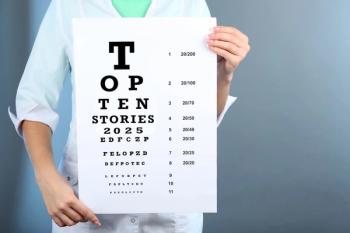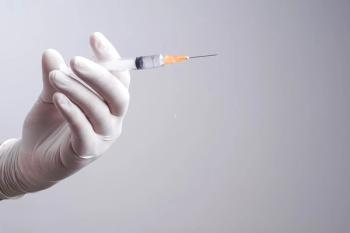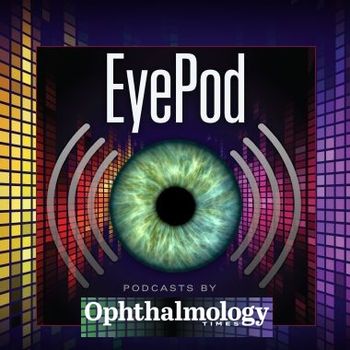
Stressing the need for child vision screenings
As parents and educators around the country are preparing this August for “Back to School” season, it is also Child’s Eye Health and Safety Month, serving as a reminder for parents, educators, and eye-care providers of the importance of vision screening for children. Plus, a new device may help specialists properly diagnose viral or bacteria pink eye in their pediatric patients.
As parents and educators around the country are preparing this August for “Back to School” season, it is also Child Eye Health and Safety Month, serving as a reminder for parents, educators, and eye-care providers of the importance of vision screening for children.
Related:
“The big message we need to get across is, ‘How is my child’s vision?’” said Jean Ramsey, MD, MPH, vice chair of education and program director of ophthalmology, associate professor of ophthalmology, Boston University School of Medicine, Boston. “All too often, I think people take it for granted [that] the eyes are there and they see.”
Of all people, ophthalmologists know that eye diseases commonly go undiagnosed and untreated, but the earlier they are detected, the better chances for responsive treatment.
Risk Factors
Risk factors for eye disease in young children include:
· Family history: If relatives had amblyopia, strabismus, or wore glasses at an early age.
· Prematurity: A higher percentage of premature children develop misaligned eyes or need glasses in the future.
Children with such risk factors should be seen for a comprehensive eye exam and followed up regularly.
Related:
Symptoms
Symptoms of potential eye disease include:
· Any misalignment of the eye when the child is awake and alert
· Squinting
· Excessive tearing
· Persistently holding things close to the face
· Verbal complaints of itchy or dry eyes
Recent:
“Screening between the ages of 3 and 5 [years] should give enough time for a diagnosis and in a best-case scenario resolve the problem,” Dr. Ramsey said.
Community message
Child’s Eye Health and Safety Month is also a reminder for physicians, whether a primary-care provider, or a school nurse, to use the best age-appropriate tools that are effective for examining child vision, she added.
“We need to get the message out in the entire community of why vision is important and why it is important to detect these vision problems early,” she said. “Over the years, that message has not disseminated into the public.”
Optic relief:
For ophthalmologists who may not see many children in their practice, the opportunity is still available to talk to adult patients about their children and grandchildren’s need for regular eye screenings, she said.
She also encourages ophthalmologists to raise the issue of children’s eye health when they are involved in the community.
“Overall, we have progressed a lot in the last 15 to 20 years, but we do have ways to go,” Dr. Ramsey said.
Blog:
As with other ocular diseases, a child may not overtly complain when an eye disease is present simply because that impaired visual state is the “normal.” This is why raising awareness for childhood vision testing is crucial.
School performance
Jane Edmond, MD, clinical spokesperson for the American Academy of Ophthalmology (AAO), encourages that the ophthalmic community to be a key player in generating greater awareness of children’s vision testing.
“Good vision and overall eye health are vital to learning and development,” she said. “Because children are still growing, being vigilant about eye health is important. The earlier problems are identified, the sooner they can be detected, addressed, and treated.”
Editorial:
Recently, more
Accommodating children
To make eye exams more comfortable for children, Dr. Edmond suggests having a child-friendly waiting room with toys, electronic devices, music, and friendly staff.
“Also, allowing a child to sit on the caregiver’s lap provides great comfort to the patient,” she said. “Using anesthetics before administering dilating drops may also offer comfort during the actual examination.”
Blog:
Diabetic children
The AAO also recommends annual screening beginning 5 years after the onset of diabetes in children.
Guidelines from the American Diabetes Association include annual screening beginning 3 to 5 years after diagnosis of diabetes once the patient is 10 years or older. The American Academy of Pediatrics recommends an initial examination 3 to 5 years after diagnosis if older than 9 years, with annual follow-up thereafter.
After-hours:
If there are no known family issues of eye-related diseases or conditions, the AAO recommends vision screening for children when they are:
• Pre-school age, between age 3 and 3½ years old
• Entering school
• Experiencing a possible vision problem
Back to school: Avoiding pink eye
Another point of concern for parents is the possible transmission of pink eye while their children are at school. Many eye-care specialists have difficulty differentiating between viral and bacterial cases of pink eye, but a rapid, in-office test (AdenoPlus, RPS Diagnostics) detects serotypes of adenoviral conjunctivitis and can help specialists determine the type of pink eye in which a child may present.
The device offers a 90% sensitivity and a specificity of 96%, the company said.
After-hours:
“Conjunctivitis is one of the most common conditions seen in medical offices, and a leading medical cause of children missing school,” said Robert Sambursky, MD, president and chief executive officer, RPS. “An accurate diagnosis is the key to improving patient outcomes and preventing the spread of disease.”
At the same time, many children with adenoviral conjunctivitis (the most common type of viral pink eye) are misdiagnosed and sent back to school while still contagious. Forms of viral pink eye can also present in patients as pharyngitis or pneumonia, according to the company.
Recent:
Once the in-office test reveals a specification as to the type of pink eye, the following guidelines may be appropriate for the patient:
Viral pink eye:
· Patient should stay out of work, school, or daycare until there are no symptoms (redness, tearing, itching, etc.). â¨
· Use artificial tearsâ¨
· Apply cool compresses to the infected eye 3 to 4 times a day for 10 to 15 minutes. Use a clean washcloth each time. â¨
· Use a clean pillowcase each night. â¨
· Wear sunglasses if eyes are light-sensitive. â¨
· Throw away makeup to prevent re-infection. â¨
· Do not wear contact lenses while feeling discomfort, especially if eyes remain red. â¨
· Patient should wash hands frequently and try to avoid touching eyes. â¨
· Use disinfecting agents with noted kill assessments for adenovirus (i.e., 10% bleach solution). â¨
Recent:
Bacterial pink eye:
· Wash hands frequently and avoid touching others. â¨
· Use antibiotic eye drop or ointment. â¨
· Stay at home for 24 to 48 hours after beginning the treatment. After this amount of time has passed, it is generally safe to return to work, school, or daycare with little risk of spreading the infection. â¨
Additional resources:
Related:
Newsletter
Don’t miss out—get Ophthalmology Times updates on the latest clinical advancements and expert interviews, straight to your inbox.













































